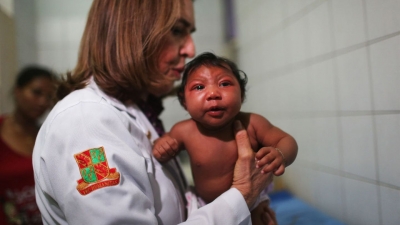
Microcephaly is a medical condition in which the circumference of the head is smaller than normal because the brain has not developed properly or has stopped growing. Microcephaly can be present at birth or it may develop in the first few years of life.
Microcephaly can be caused by a variety of genetic and environmental factors. Children with microcephaly often have developmental issues. Generally there’s no treatment for microcephaly, but early intervention with supportive therapies, such as speech and occupational therapies, may help enhance your child’s development and improve quality of life.
There are many potential causes of microcephaly, but often cause remains unknown. The most common causes include:
- infections during pregnancy: toxoplasmosis (caused by a parasite found in undercooked meat), Campylobacter pylori, rubella, herpes, syphilis, cytomegalovirus, HIV and Zika;
- exposure to toxic chemicals: maternal exposure to heavy metals like arsenic and mercury, alcohol, radiation, and smoking;
- pre- and perinatal injuries to the developing brain (hypoxia-ischemia, trauma);
- genetic abnormalities such as Down syndrome; and
- severe malnutrition during fetal life.
Picture Credit : Google

